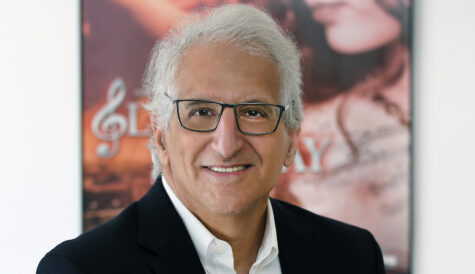TV’s Big Questions: has the wave of M&A been positive for the industry?
 Industry consolidation continued apace in 2015. The biggest deal, announced last year and effective from early 2016, was the merger of Banijay Group and Zodiak Media, and the news French media giant Vivendi was buying a 26% chunk of the new entity in a €290 million (US$314 million) deal.
Industry consolidation continued apace in 2015. The biggest deal, announced last year and effective from early 2016, was the merger of Banijay Group and Zodiak Media, and the news French media giant Vivendi was buying a 26% chunk of the new entity in a €290 million (US$314 million) deal.
 Canal+ owner Vivendi is set to play a bigger role on the international stage this year, not just as a shareholder in ‘Zodijay/Banijak’, but having also acquired a cluster of smaller content companies has clearly made expansion of its global footprint a priority.
Canal+ owner Vivendi is set to play a bigger role on the international stage this year, not just as a shareholder in ‘Zodijay/Banijak’, but having also acquired a cluster of smaller content companies has clearly made expansion of its global footprint a priority.
It was a tumultuous year in France, with enormous fallout from the TF1-Newen Group deal. Meanwhile, like Vivendi, Lagardere Entertainment is refocusing on activity outside France, and has a more international outlook as we head in to 2016.
TF1 could well be taking a strategic cue from ITV, which has been the most aggressive buyer of production companies in recent years and in 2015 did its biggest deal yet, buying The Voice prodco Talpa Media. ITV also installed Leftfield Entertainment’s Brent Montgomery atop its restructured US division in 2015, replacing Paul Buccieri, who had left for A+E.
But as mega indies become more mega (giga?), and both production and distribution gets more consolidated, is it good news for the sector? “It’s absolutely fantastic for the industry,” says TCB Media Rights’ Paul Heaney.
 “As long as creativity is allowed to flourish – whether that’s at the super-indies or smaller producers – and the broadcasters are still able to commission the best content, then M&A activity should not be a negative for the industry,” says Cineflix Media’s CEO, rights, Chris Bonney. “This obviously puts a demand on the super indies to have the right management structure in place.
“As long as creativity is allowed to flourish – whether that’s at the super-indies or smaller producers – and the broadcasters are still able to commission the best content, then M&A activity should not be a negative for the industry,” says Cineflix Media’s CEO, rights, Chris Bonney. “This obviously puts a demand on the super indies to have the right management structure in place.
“M&A activity over the year means that Cineflix Rights has become the UK’s largest independent distributor by revenue, and we believe this means we’re able to offer something different to both the bigger groups and smaller boutique distributors – so it’s been a positive for us.”
“It shakes the structures up and exposes the weaker players. It also allows a trickle down of talent who relish an opportunity to ‘go it alone’ as indies, rather than being in a super-indie. It acts as fertiliser for the business, allowing green shoots of talent to grow.”
 The M&A is a result of indies retaining rights, says Stephen Lambert, the Studio Lambert founder and All3Media executive who has started indie brands, and worked for large and small content companies in the UK and US. “Once indies became profitable, consolidation was inevitable,” he says.
The M&A is a result of indies retaining rights, says Stephen Lambert, the Studio Lambert founder and All3Media executive who has started indie brands, and worked for large and small content companies in the UK and US. “Once indies became profitable, consolidation was inevitable,” he says.
“That leads to strong, robust companies able to retain talent and spend a lot on development. However, since it is easier than ever to set up new indies, the big merged groups have to make their organisations creatively exciting and rewarding or their best people will leave.”
One company active in buying into prodcos was FremantleMedia, which took stakes in Man Alive, Naked Entertainment, Corona Pictures, No Pictures Please, Fontaram, Kwai, Full Fat TV and Wildside.



